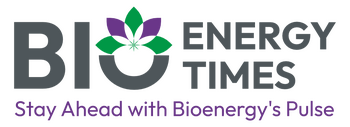The area of arable land dedicated to cultivating bioenergy crops reached a new peak, yet electricity generation from biomass decreased by 15% in a year due to capacity issues, according to government data analyzed by Compact Syngas Solutions, a waste-to-hydrogen company.
In 2023, 133,000 hectares of agricultural land were used for bioenergy crop cultivation, marking a 39% increase from the 96,000 hectares utilized in 2019. However, electricity production from plant biomass declined from nearly six million tonnes of oil equivalent to 5.1 million tonnes within the same period.
The decrease is attributed to maintenance shutdowns at three major power stations, underscoring industry bottlenecks that necessitate alternative solutions.
Biofuels, such as biodiesel and bioethanol, accounted for more than a third (36%) of the land allocated to bioenergy crops. In 2022, the UK supplied 33% of its bioethanol and 31% of its biodiesel demand for the road transport market domestically.
Recently, Compact Syngas Solutions, headquartered in Deeside, Wales, secured nearly £4 million (€4.7 million) in government funding to enhance the environmental credentials of its biomass and waste-to-hydrogen facilities through carbon capture technology.
CSS has developed an advanced gasification process capable of generating electricity, heat, and hydrogen gas from waste materials, including biomass like waste wood and selected non-recyclable materials. Additionally, the process produces biochar, a valuable carbon sequestration tool with versatile applications.
Paul Willacy, managing director of Compact Syngas Solutions, emphasized the sustainability of bioenergy crops and their potential to support the UK’s green energy goals when coupled with effective carbon capture technologies.
“Capacity limitations may be restricting the UK’s bioenergy output, leading to the underutilization of a valuable renewable energy source,” Willacy noted. “This inefficiency not only hampers eco-friendly energy production but also risks releasing carbon dioxide and methane as bioenergy crops decay. Implementing smaller waste-to-energy plants and establishing a network of micro-hubs nationwide could enhance capacity and ensure efficient utilization of bioenergy crops.”














